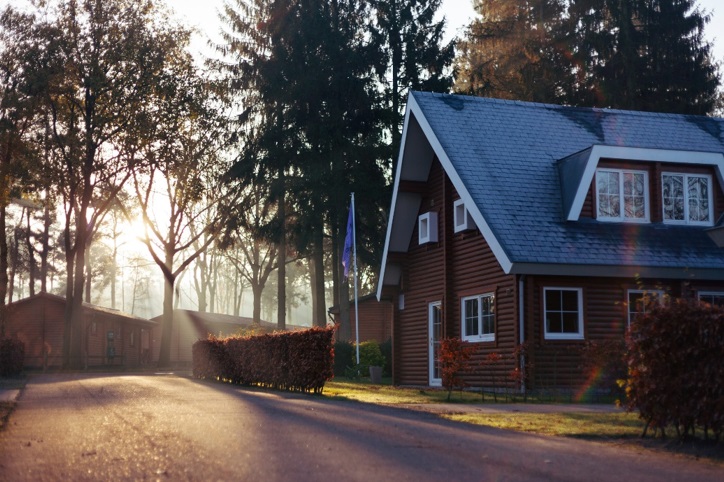
Homeownership is a significant milestone, often symbolizing financial stability and personal success. However, owning a home comes with more than just the joy of having a place to call your own. Many new homeowners underestimate the various costs and responsibilities that come with property ownership.
While monthly mortgage payments may be the most obvious expense, there are many hidden costs that can catch homeowners off guard. Additionally, maintaining a home requires ongoing care, repairs, and a solid understanding of financial obligations.
This guide explores the full scope of homeownership expenses and responsibilities, helping you understand what it truly takes to own and maintain a property.
Whether you’re a first-time buyer or an existing homeowner looking for better financial management strategies, being informed can prevent costly surprises and ensure long-term financial stability.
Understanding Financial Obligations in Homeownership
Owning a home involves more than just paying the mortgage. Many other financial obligations require careful planning to avoid unexpected burdens. Property taxes, homeowner’s insurance, and regular maintenance expenses can significantly impact monthly and annual budgets, making financial preparedness essential.
While most homeowners plan for these costs, unexpected financial hardships—such as job loss, medical emergencies, or economic downturns—can make it difficult to keep up with mortgage payments. In such cases, foreclosure may become a real concern.
But don’t worry because Gary can help if you want to sell your house before foreclosure. Speak to him and discuss available options to prevent severe financial setbacks and plan a more manageable path forward.
Beyond mortgage payments, property taxes vary based on local regulations and the home’s assessed value. Homeowner’s insurance, required by most mortgage lenders, protects against damages and liabilities. Additionally, private mortgage insurance (PMI) may be necessary for those who purchase a home with a smaller down payment. These costs must be factored into any long-term financial plan to ensure continued affordability.
The True Cost of Home Maintenance
While many homebuyers focus on the purchase price, maintenance costs can quickly add up. Unlike renting, where landlords are responsible for repairs, homeowners bear the full responsibility of maintaining their property. Regular upkeep helps prevent small problems from turning into costly repairs.
Routine maintenance includes HVAC servicing, plumbing inspections, roof repairs, and landscaping. Ignoring these responsibilities can lead to expensive damages, such as mold infestations, water leaks, or structural issues. Experts recommend setting aside at least 1% to 3% of a home’s value annually for maintenance and repairs.
Additionally, homes with special features, such as swimming pools or extensive landscaping, may require additional maintenance expenses. Neglecting routine care can shorten the lifespan of critical home systems, ultimately leading to larger, unexpected repair costs.
The Importance of a Home Emergency Fund
One of the most overlooked aspects of homeownership is the need for a financial cushion to handle unexpected expenses. While setting aside a budget for regular maintenance is essential, emergency repairs can arise at any time. A broken water heater, foundation issues, or sudden plumbing failures can be expensive requiring immediate attention.
Without an emergency fund, homeowners may be forced to take on high-interest loans or credit card debt to cover urgent repairs. Financial experts recommend saving at least three to six months’ worth of expenses in an emergency fund to cover unexpected home-related costs.
Proper financial planning ensures that homeowners can address emergencies without jeopardizing their financial stability. An emergency fund serves as a safety net, preventing stressful situations and potential long-term financial setbacks.
Homeowners Association (HOA) Fees and Community Responsibilities
For those living in planned communities or condominiums, homeowners association (HOA) fees can be a recurring expense. These fees contribute to the maintenance of shared spaces, security, and community amenities such as swimming pools, gyms, and clubhouses.
HOA fees vary depending on the community and the services provided. Homeowners must also adhere to community regulations, which may dictate property aesthetics, landscaping rules, and permissible home modifications. Failing to comply with HOA rules can result in fines or legal actions.
Before purchasing a home in an HOA-governed community, prospective buyers should thoroughly review the association’s rules, financial health, and fee structure. Understanding these obligations prevents potential conflicts and ensures compatibility with the homeowner’s lifestyle.
Utility Bills and Energy Efficiency Considerations
Monthly utility bills are another essential factor in homeownership costs. Electricity, water, gas, and internet services contribute to ongoing expenses. Large homes, older properties, or inefficient appliances can lead to higher utility bills.
Investing in energy-efficient upgrades can help reduce long-term costs. For example, installing LED lighting, energy-efficient appliances, or solar panels can lower monthly utility expenses. Additionally, proper insulation, smart thermostats, and double-pane windows can enhance energy efficiency, reducing heating and cooling costs.
Homeowners should also consider seasonal variations in utility bills. Heating costs tend to rise during winter, while air conditioning expenses increase in summer. Understanding these fluctuations allows for better budgeting and financial planning throughout the year.
The Long-Term Value of Home Improvements
While homeownership requires ongoing expenses, strategic home improvements can increase property value over time. Renovations, such as kitchen upgrades, bathroom remodels, or adding a deck, can enhance a home’s appeal and boost resale potential.
However, not all renovations offer the same return on investment. Some projects, such as minor kitchen remodels or energy-efficient upgrades, tend to provide higher returns. On the other hand, overly customized renovations may not appeal to future buyers, limiting resale value.
Before making major home improvements, homeowners should research market trends and consult with real estate professionals to determine which upgrades provide the best financial benefits. Proper planning ensures that investments align with long-term goals and add value to the property.
Planning for the Future as a Homeowner
Owning a home is a long-term commitment that requires careful planning for the future. Homeowners should periodically reassess their financial situation, ensuring that their home remains affordable and aligns with their evolving needs.
For example, changing job situations, growing families, or retirement plans may influence housing decisions. Regularly reviewing mortgage terms, refinancing options, and property value trends can help homeowners make informed financial choices.
Additionally, estate planning ensures that homeownership transitions smoothly in the future. Preparing a will, establishing property transfer plans, and designating beneficiaries prevent legal complications for heirs. Proper planning safeguards a homeowner’s legacy and financial assets.
All in all, homeownership offers many benefits, from building equity to having a space to call your own. However, it also comes with numerous financial and maintenance responsibilities that require careful planning and proactive management. Understanding mortgage obligations, property taxes, utility costs, and necessary repairs ensures long-term financial stability.















